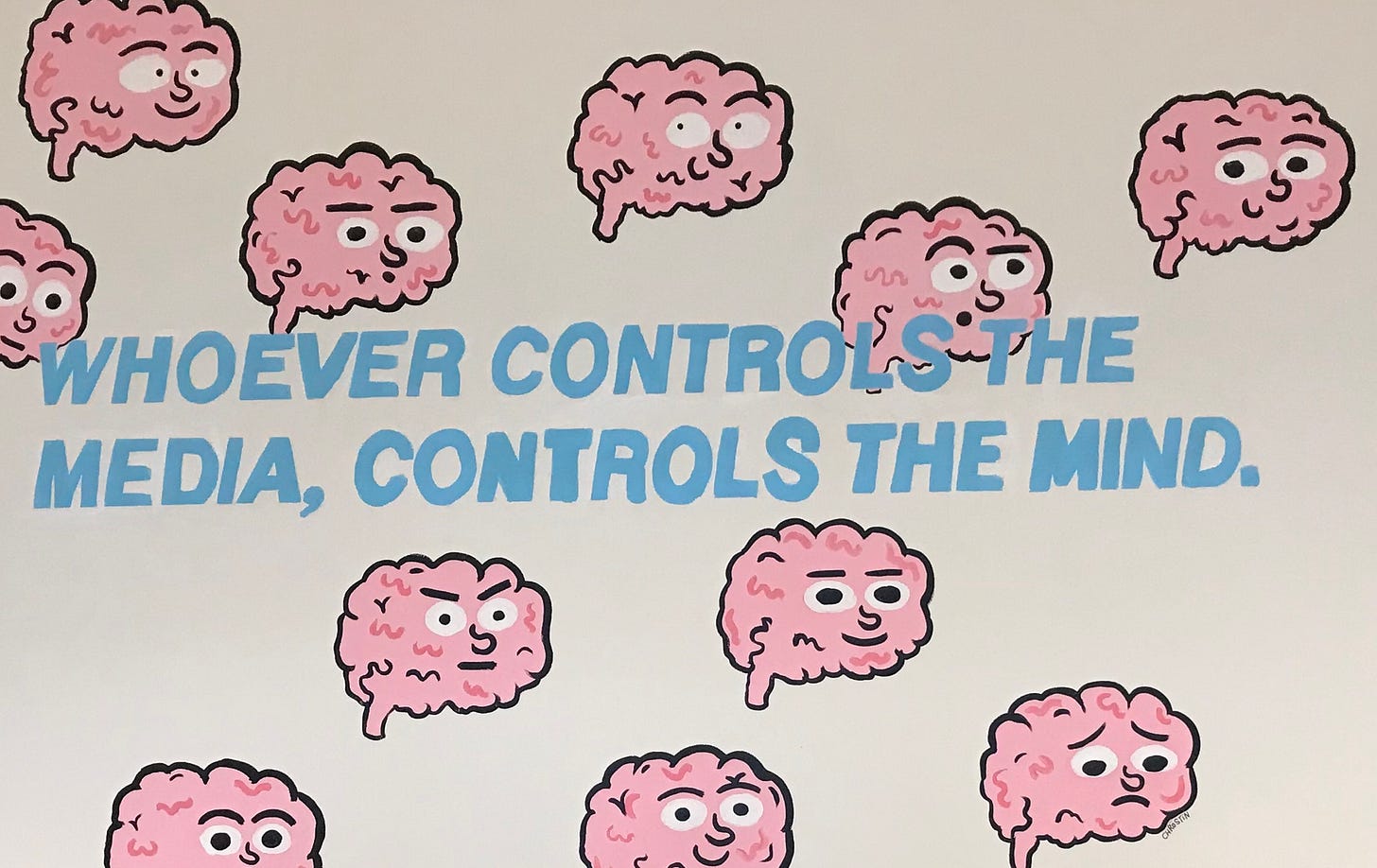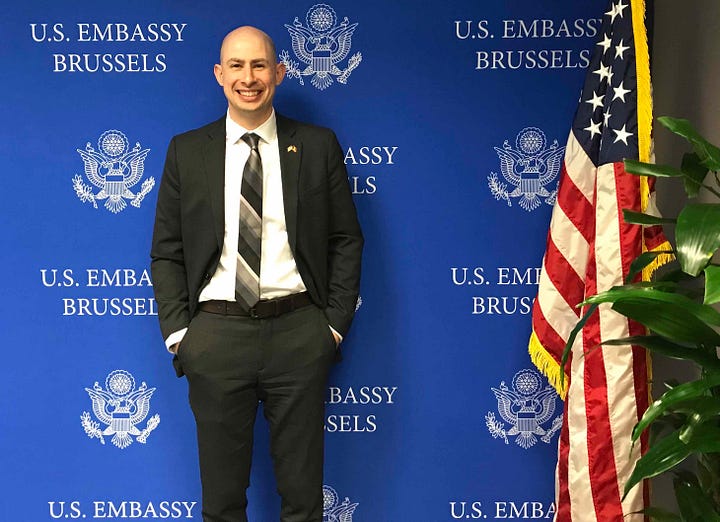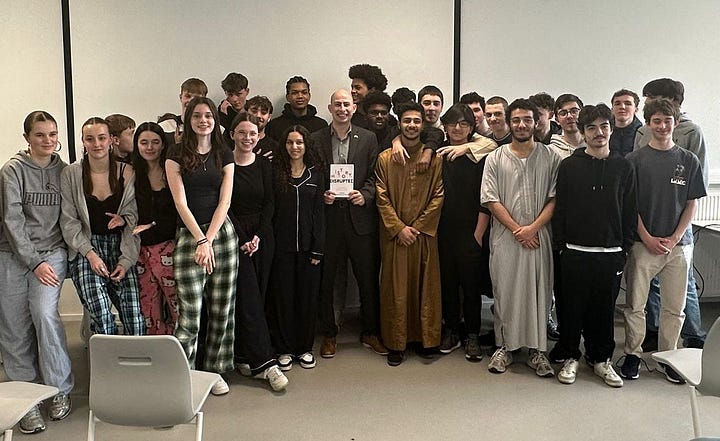
Long-time readers of this newsletter will recall that “History Club” owes its origins to the social media app Clubhouse. At the height of the Covid-19 pandemic, Clubhouse was like a sparkling oasis amid a desert of isolation and lockdowns. Each day on the app, numerous “clubs” held enriching conversations among smart, funny and inquisitive people. My History Club had more than 100,000 members and averaged 2,500 listeners per show. That success led to the creation of this Substack.
Another club on Clubhouse was Geography Club, started by an ad tech analyst obsessed with geography. One of his first events was called “Is Belgium a Real Country?”, which began with a 20-minute lecture on why contemporary Belgium was a figment of our imaginations. It was a joke, of course—though today when rogue actors, literally, are trying to wipe countries off the map such a joke feels far less funny. But the humor derived from very real complexities and paradoxes.
Prior to the 19th century, Belgium did not, in fact, exist as a separate country. It had been ruled by Spain, then Austria, then the Netherlands, then France, reunited with the Netherlands, then, following a revolution, became independent in 1830 (though not formally recognized by the Dutch until 1839). Over the centuries, the northern and southern parts of the country evolved in different directions: the northern region is called Flanders and its official language is Dutch, and the southern region is called Walloon (or Wallonia) and its official language is French.* There is also a German enclave, meaning that Belgium has three official languages—Dutch, French and German—as well as six governments for a country of fewer than 12 million people.
Further complicating the matter is Brussels, the capital. Brussels is technically its own region of the country (the “Brussels Capital Region”), has two official languages (Dutch and French, though many people speak English), comprises 19 municipalities (including the “City of Brussels”), and is home of the European Union and its thousands of diplomats from 27 member states. In short, Belgium is a very complex place. To quote one writer in The Brussels Times, Belgium has increasingly become “more difficult to govern… The process of finding the right balance between the federal and other levels is very much still a work in progress.”
I was invited to Brussels in both 2022 and 2023 to meet with European and American policymakers, students, scholars and non-governmental organizations (NGOs). On those trips I heard much about Belgium’s challenges including climate change, inflation, public health, drought, immigration and the Flanders-Wallonia divide. The trips also fostered relationships with many wonderful colleagues with whom I am regularly in touch. So, when the U.S. Embassy in Belgium invited me to return in 2024, I was thrilled. When they told me my mission was to help foster greater information literacy in the country, I was even more thrilled.
You see, another challenge facing contemporary Belgium is disinformation / information literacy. Belgium is a highly digital country:
Nearly 8.5 million Belgians use Facebook,
More than 5 million Belgians use Instagram,
More than 5 million Belgians use LinkedIn and
Millions of Belgians use TikTok and Twitter/X. [1]
Young people are the highest percentage of users for each platform, and after keeping in touch with others, two of the top four drivers of their social media usage are reading news stories and finding content online. [2] Combined with the fact that:
40 percent of Belgians do not read or listen to books;
Readership for Belgian newspapers has been declining;
Trust in journalism in Belgium has been declining;
Belgium’s media market is fragmented between Dutch and French outlets; and,
Professional journalists are facing burnout due to overwork and dwindling revenues, [3]
and it’s apparent why media and information literacy are important. With so much information being consumed online—often exclusively online—in different languages in different regions of the country among different segments of the population, making sense of the content we see on our phones each day becomes imperative for consumers and political leaders.
This, of course, is my expertise and a primary focus of both History, Disrupted and the History Communication Institute. My message to policymakers has been that we will never regulate ourselves out of this conundrum. We must complement regulation with education, specifically information literacy education that helps all social media users understand why they see certain content in their newsfeeds, how the algorithms work on each platform, and how to be more critical information consumers online—not solely history content, but all content. This has become even more imperative with the proliferation of AI-generated material. I was thrilled when the American Embassy told me these were among their priorities, as well.
On this particular trip, we partnered with four educational institutions, namely:
Ghent University, a public university in Ghent, Belgium, part of Flanders;
Thomas More, a technical university with multiple campuses, including in Mechelen, part of Flanders;
A Dutch-speaking high school in the City of Brussels; and,
A French-speaking high school class in Molenbeek, a municipality on the western edge of the Brussels Capital Region.
Since the venues on this trip were primarily Dutch-speaking, we also made sure to be visible in French-speaking media outlets, including:
An interview in the French-language newspaper La Libre;
An interview in the French-language tabloid Sudpresse;
An interview on the French-language radio station RTBF.
(Last year, I did interviews with the Dutch newspaper De Standaard and the French outlet Le Soir.)
I also met with U.S. Ambassador to Belgium Michael M. Adler.




A summary of each event would make for a much longer article. Instead, allow me to make three general observations as to why disinformation and information literacy are such difficult problems to tackle in a country such as Belgium, and what remedies may exist to overcoming them.
1. Immigration
If the municipality of Molenbeek sounds familiar to you, it might be because it was the staging ground for the terror attacks on Paris in 2015. Those attacks, including the taking of hostages at the Bataclan theater during a rock concert, killed more than 130 people. The violence was unleashed by the Islamic State in Iraq and the Levant (ISIL), and as the identities of the assailants became known it emerged that the plot had originated with a Belgian-born man of Moroccan descent named Abdelhamid Abaaoud, from Molenbeek.
Molenbeek has been a community of Moroccan immigrants since the early 1960s. Back then, Moroccan men came to Belgium as seasonal workers to work in construction, mining, and other blue-collar industries. Over time they stayed, bringing their families and establishing roots. Today, more than 500,000 people living in Belgium have Moroccan heritage, some with Belgian citizenship and others without.
Despite more than sixty years of immigration, however, integration into Belgian society has been uneven and marked by discrimination. During periods of high unemployment and economic anxiety, Moroccan immigrants have been accused of stealing jobs and blamed for societal ills. Moroccans in Belgium have stories of landlords refusing to rent them apartments, being denied entry into facilities, not having access to baths or laundry, and studying in segregated schools. [4]
Today, Molenbeek is one of Belgium’s poorest regions. It is marked by educational disparities, high crime, and high unemployment, particularly among young people. During the 2010s, it became fertile recruiting ground for violent Islamist extremists; Belgium sent the highest number of jihadists to the Syrian Civil War than any other country in Europe, many with ties to Molenbeek and with Moroccan heritage, according to Egmont, a Belgian think tank. A significant portion of Islamist recruitment is done in prisons, where Muslims are held in higher numbers and are often arrested for petty crimes before being radicalized. Abdelhamid Abaaoud met one of his fellow Paris attackers while both were in jail.
The school in Molenbeek that I visited was a product of these histories. The students I met with were all children of Moroccan immigrants or were Moroccan immigrants themselves. They spoke French and Arabic; only a handful spoke English. (Their teacher translated much of my presentation). I was told by school officials that these were among the most disadvantaged and marginalized adolescents in the country, their communities purposefully under-resourced by anti-immigration officials—with fears the situation will grow worse after the upcoming Belgium elections.
Such a community is an attractive target for disinformation. The students spend their lives on their mobile phones; they do not read the Dutch- or French-speaking presses, instead getting their information in Arabic from their families and friends, their mosques, and from social media, particularly Instagram, YouTube and Twitter/X. Within such an echo chamber, the hateful rhetoric spreads quickly, particularly about the United States and Israel. In just one example, after my presentation I sat and talked with the students in a small group. One student, who spoke English, asked me my religion. “I’m Jewish,” I told her. “Aha! Everyone in America is Jewish!” she said. When I told her Jews were only 2% of the American population, she looked at me with disbelief. I told her that the predominant religion in America was Christianity, and she was completely surprised; she did not know there were Christians in America.
Overall, my interactions with the students were highly positive. We talked about Morocco’s triumphs in the World Cup, the English Premier League, they showed me some French-Arabic rap music, and I told them I was an author (they were amazed to see my book on Amazon). Following the event, one of the students messaged me on Twitter/X to say that she enjoyed our meeting. I replied to her, and we followed each other. Then, I looked at her newsfeed; she had recently retweeted a post likening U.S. President Joe Biden to Adolf Hitler.

2. Ethnic Nationalism
Part of the challenge of integrating Moroccan and other Muslim immigrants into Belgian society stems from the persistent strength of the Belgian far-right, particularly in Flanders.
Since the late 1970s, the party formerly known as Vlaams Blok—today known as Vlaams Belang—has enjoyed electoral success by leaning into an anti-immigration agenda. Among Vlaams Belang’s priorities are the break-up of modern-day Belgium and the establishment of an independent republic of Flanders that would heavily restrict migration and tightly define Flemish nationality.*
Vlaams Belang has also leaned into the so-called “Great Replacement Theory,” a transnational conspiracy theory that alleges an elite group of world leaders is colluding against white Europeans to replace them with non-Europeans. (American readers might recognize this ideology from the chants by neo-Nazis in Charlottesville in 2017.) The issues of immigration and Flemish identity loom consequential for the Belgian elections in June. A recent article in Le Soir stated that immigration will be a determining factor in voting for up to 43% of Flemish people. The push for an independent Flemish state has long been interwoven with a reactionary response to migrants.
Social media has been a key to Vlaams Belang’s resurgence. Last year, the party spent more on Facebook advertising than any party in Belgium’s history, according to news reports. Over the summer, Vlaams Belang spent more than €100,000 in one week on a social media campaign for free Flemish flags, gathering user and voter data in the process. The flag in question was not the official crest of the Flemish community, but rather a nationalist battle flag. Overall, in 2023, the party spent €1.7 million advertising on Facebook and Instagram. Since 2019, the figure exceeds €3.6 million.
Part of information literacy on social media, then, includes understanding the sources and meaning behind historical imagery such as the Flemish battle flag, and the political and historical contexts within which one sees such messaging. It is also critical to be able to distinguish between content that has purchased a spot in your news feed versus content that appears more organically (though both are algorithmically determined). While the information literacy challenges among Dutch-speaking Flemish youth differ from the French-speaking Moroccan youth, many of the underlying principles remain constant. When actors use evocative imagery and historically-laden messaging on social media to sway young minds and sew divisiveness, having the ability to ask critical questions becomes crucially important.
Meanwhile, the targeting of young people on social media by Vlaams Belang seems to be working. “Vlaams Belang has a younger electorate than the average for all the other parties combined,” researcher Benjamin Biard recently told France24. The same article reported that nearly 25% of Flemish first-time voters intend to vote for them. Social media is playing a decisive role in young people’s voting behavior.
3. Declines in journalism and history
The previous examples show how Islamic terror groups and far-right nationalists use social media to target young people with disinformation and divisive rhetoric. Numerous scientific studies (such as this one, for example) have demonstrated that the minds of adolescents and young adults are very impressionable. Young people are:
heavily influenced by their peers;
can be stirred and swayed by emotional and rhetorical appeals; and,
are constantly on social media.
As such, young people are frequent targets for disinformation—including in the United States.
Young people are also increasingly not engaging with professional journalism. Across Europe, social networks have steadily replaced news websites as the primary source for news and information, particularly for young audiences. [5] In one report, young people were found to be less trusting of traditional news sources, less interested in traditional news subjects, tired of a perceived lack of diversity in conventional news, frustrated by the repetitiveness of news coverage, uninterested in traditional news presentation styles, and prone to avoid news coverage that they found depressing in favor of more light-hearted content in their social media feeds. [6]
Young people are also, increasingly, not engaging with professional history. This has been true for more than a decade in the United States, where undergraduate history degrees have declined to their lowest levels in 30 years. The same is beginning to be true in Belgium; according to the OECD, the largest fields of study for bachelors degrees in Flanders are business, healthcare, education, industrial sciences and social work. Anecdotally, I have been told that one leading history institute has decided not to replace 10% of its retiring history professors due to funding issues, and another university has warned that its archival studies degree may disappear entirely. At the same time, those who earn history PhDs in Flanders are increasingly having to find work outside the academy. “The amount of Flemish history doctors who continue to do in-depth academic research will soon reach historically low levels,” concluded one research paper. [7]
Finally, both history and journalism face disruption from Artificial Intelligence applications such as ChatGPT and Large Language Models. A recent article in the Dutch outlet VRT surveyed Belgian universities to find that student use of AI is widespread, particularly for writing and research, skills on which journalism and history depend. Even when instructors insist that students use AI “responsibly,” students often use it to write their essays and pass off AI-generated ideas as their own. “AI can easily handle the writing level of an undergraduate and average master's student,” said Dimitri Mortelmans, professor of sociology at the University of Antwerp. “It turns everything upside down,” he told VRT.
Information literacy as a pivotal 21st century skill
These seem like steep challenges—and they are. But they are not insurmountable.
In my meetings with policymakers, the conversations have repeatedly turned to regulation, most recently the forced divestiture of TikTok passed by the U.S. Congress and signed into law by President Biden. My response has been that while regulation of social media may prove to have some effect, we will never regulate ourselves out of this conundrum—in part because these issues are forged by historical and societal factors, not solely technological ones.
We must complement regulation with education, which is where new forms of literacy must be continually developed and taught: media literacy, historical literacy, information literacy and A.I. literacy. Policymakers can and should provide the funding, resources and platforms for such work to happen, which is why I am grateful to the U.S. Department of State for continuing to send me on these missions. We need more of them, and urgently.
There are also resources and strategies that we can use to help information consumers. On the final day of my trip, I visited the U.S.-European Media Hub and recorded a series of videos that included tips for improving information literacy. For the sake of time and brevity, those videos will be shared in a subsequent newsletter.
The challenges are real, but we should not lose faith. There are solutions if we invest in education along with advocating for meaningful, democratic and equitable political and societal changes. It will take a collaborative effort among governments, scholars, educators, tech companies and civil society organizations, but my trip to Belgium showed me that such collaborations are possible and effective. Let’s hope there are many more such efforts in the future.
Have a good week—and happy Mother’s Day,
-JS
NOTES
[1] Belgium social media statistics are courtesy of NapoleonCat.
[2] Drivers of social media use in Belgium are courtesy of Oosga.
[3] Belgium reading statistics are courtesy of StatBel. Statistics about Belgian media are courtesy Reporters Without Borders and Reuters Institute.
[4] Source: Middle East Eye.
[5] Source: Reuters Institute.
[6] Source: Reuters Institute.
[7] Source: “Carrières in context.”
*Corrections: The first version of this article incorrectly stated that northern Belgium and southern Belgium were split along religious lines. Indeed, Belgium as a whole has been predominantly Catholic for much of its history. The first version of this article also stated that Vlaams Belang seeks to tightly define Belgian identity; in fact, they seek to tightly define Flemish identity.




Love reading reports from the peripatetic Jason Steinhauer. Don’t always take the time but when I do — definitely worth it! Thanks so much for your work.
Another great piece from Jason. Thanks for your great work and insights!